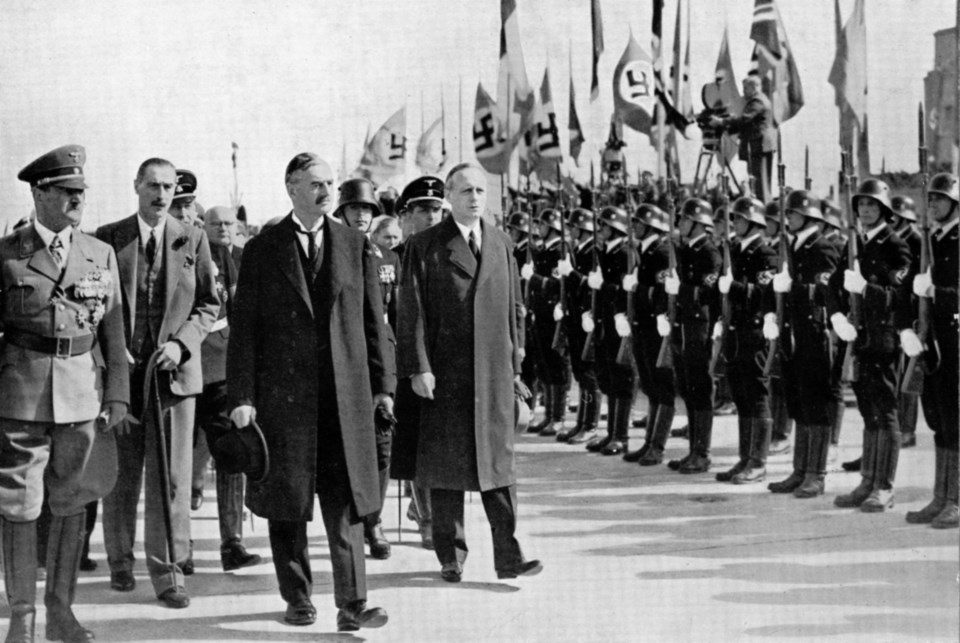The man who was the diplomatic face of Adolf Hitler’s Nazi Germany called his time living in Vancouver more than a century ago among the best of his life.
Joachim von Ribbentrop began that life in 1893 in Wesel, Kingdom of Prussia, German Empire.
He left it at the end of a hangman’s noose after being convicted at Nuremberg for war crimes, crimes against humanity for his part in The Holocaust, crimes against peace and planning a war of aggression.
As Hitler’s foreign minister, Ribbentrop had negotiated with Stalin to divide Poland at the start of the Second World War; he was ambassador to the United Kingdom. He was instrumental in the creation of the so-called Rome-Berlin-Tokyo Axis agreements, which led to the coining of the term Axis powers for the brewing war.
Ribbentrop’s path to B.C. began when his family moved from Alsace-Lorraine (in modern-day France) on the German-French border to Arosa, Switzerland; he and his elder brother Lothar had earlier studied in Grenoble.
It was in Arosa that he met Canadians as well as people from England where he and his brother soon went.
However, instead of returning to Arosa, the brothers opted for Canada — Lothar, aged 19, and Joachim, 17.
In his 1992 biography, Hitler’s Diplomat, author John Weitz speculates Ribbentrop's parents perhaps thought Canada was safer than other destinations.
Or, Weitz muses, perhaps they thought the brothers might curry some favour with Berlin’s Alvenslaben brothers, Alvo and Eno, land speculators and adventurers who had begun an investment business in Western Canada.
Alvo had invested in Vancouver, married a Canadian woman and became a Vancouver society fixture. In 1907, he was one of the co-founders of the Vancouver Stock Exchange.
The Goethe Institute notes Alvo used German funds to finance the Dominion Building on the corner of Cambie and Hastings Street. And, he built a luxury family house in Kerrisdale now used by the Crofton House girls' school.
So, in the fall of 1910, the brothers boarded a White Star Line ship and set sail for Canada.
In Quebec, Ribbentrop worked for Molson’s Bank and later the Canadian Pacific Railroad, a timekeeper job that brought him to Vancouver.
Weitz noted the German influence in Vancouver was like nowhere else in North American at the time. Granville Street’s Deutsche Club was among the city’s most fashionable haunts.
One of Ribbentrop’s haunts for enjoying German beer was the Rathskeller in the Flack Block, also known as the Copp Building at the corner of West Hastings and Cambie.
“This prominent and fashionable structure stood in marked contrast to the more modest brick and wooden structures in the area, and continues to maintain its landmark presence,” the Canada’s Historic Places website said.
He soon returned to Ottawa where his brother was sick, and then on to Germany. He later returned to North America for a brief time before returning to Germany.



